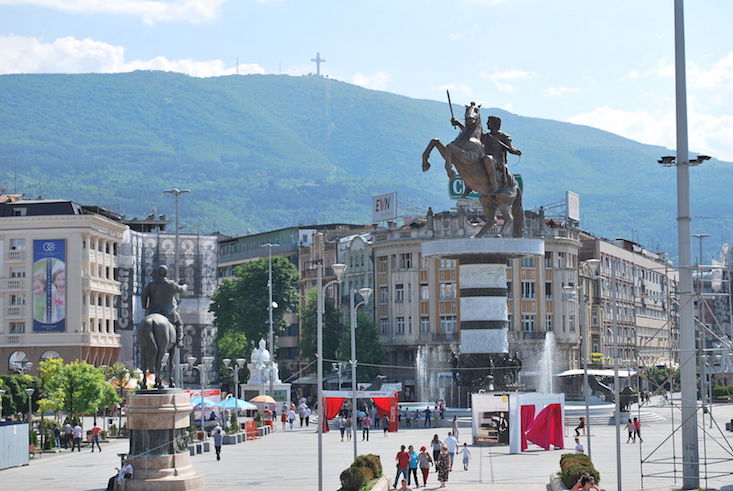Construction of controversial Ferris wheel begins in Skopje

Construction of a huge London Eye-style big wheel has begun in Skopje, the capital of the Republic of Macedonia. The wheel forms part of the controversial government-funded revamp of the city, branded “Skopje 2014”.
Foundations for the wheel, which will stand at a height of 73m atop a pedestrian bridge on the Varadar River, were laid on Wednesday night. The wheel will have 30 passenger cabins, able to carry 300 people, and a café and souvenir shop will be built nearby. The wheel will be built in the same classical style that is a trademark of the “Skopje 2014” revamp. Construction is due to take five years.
The Ferris wheel is contentious largely because of its cost. The Skopje authorities will pay 18.3 million euros to the local construction company Beton, and has already spent another 500,000 euros on the design of the wheel, which was entrusted to two Austrian companies, a2 Hotelconcept GmbH and Massabni Architects GmbH. In a city with an annual budget of 70 million euros, spending such a large sum has been criticised by many.
Supporters say it will transform the image of a city tainted by decades of dull socialist architecture and disrepair, restore a sense of national pride and create a more cosmopolitan atmosphere. According to a statement from the office of Mayor Koce Trajanovski, the wheel will bring great benefits to Skopje as “another star attraction” in the city. Nevertheless, the project has been widely criticised by the architectural community as an extravagance.
The Association of Architects of Macedonia claims that there has been no proper consultation with architects, and objects principally to the planned location of the wheel, which critics say will turn the centre of Skopje into a funfair. In addition, many architects have voiced that they would have preferred a more contemporary approach to the design. Critics have also complained about the lack of transparency of the contracts given to the architects and designers, and have argued that a relatively poor country should spend its resources more prudently.
The cost of Skopje’s new look has risen sharply, far exceeding the initial figure of 80 million euros, and now standing at around 560 million euros.